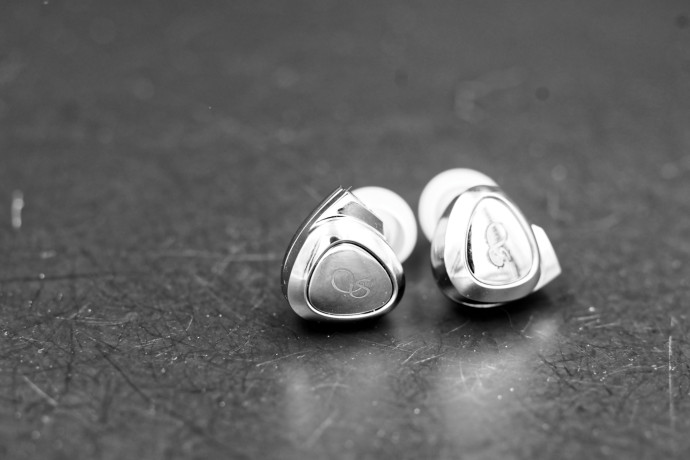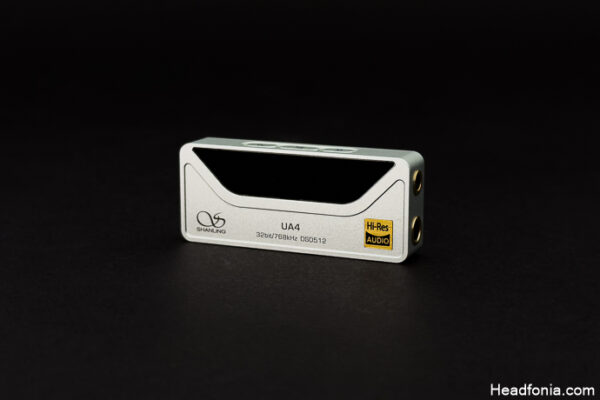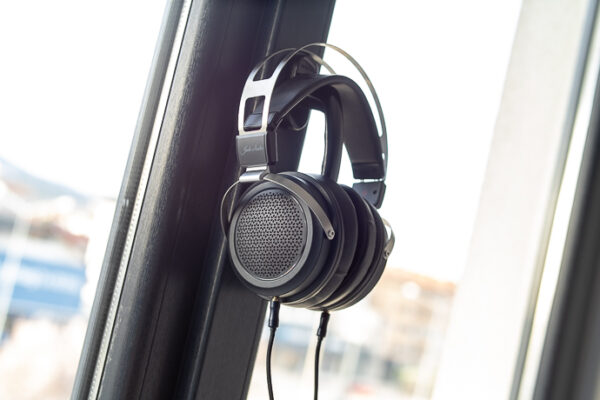Design & Build Quality
Casing
Entirely made of liquid die-cast zinc aluminum alloy, the Shanling Sono seems to mix and match everything that the brand learned across the year. In fact, despite its lower MSRP, the new IEM enjoys the same kind of treatment you’ll find in higher-priced models from the brands – like the ME700 and ME800 for example. Sure, die-casting isn’t as “premium” as CNC, but that doesn’t stop the brand from using those same CNC machines to engrave fine details on the IEM, where a simple printer would’ve done the same job…
The ear keeps the same design as its predecessor, with a rounded body, metallic accent thanks to the mirror-like finish – each Sono is hand-polished in that regard – and the classic Shanling logo visible onto the faceplate. A design we’ve seen since the first ME500 we’ve reviewed, enhanced on every generation, only replaced on higher end models like the ME900, or acrylic one like the AE3.
It kinda reminds me of TinHifi P1 though, even if that one was a lot more dense due to its conception, but the closest model you could think about nowadays would obviously be the FiiO FD11, which carries the same vibe. Both out and in-ear.
Still, the only drawback I could spot would be its relatively light weight, but some might see that as an advantage. We’ll see once we wear them!
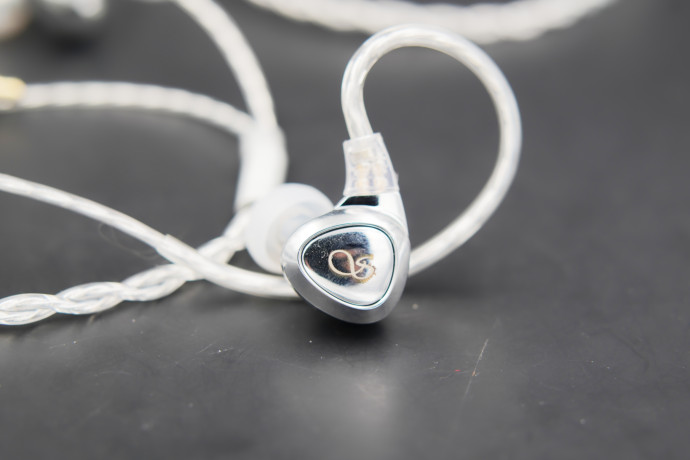
Build Quality
Compared to CNC-milled cases, die-cast one are more durable and allow much faster production, which is ideal in this kind of product. Of course, compared to your premium model, with a shell made of CNC’ed aluminum, the Sono won’t exude the same sense of fullness, or durability. That said, by experience,those remain supremely robust and should easily withstand the stand of time.
And, apart from the slim slit separating the two part of the case, the Shanling Sono is impeccable – even more considering the price. No shards or misplaced elements, a smooth shell with mirror-like finish, and a super rigid duct giving a good level of comfort, once the earphones are placed in your ears. Even the socket input enjoyed some extra care as Shaling added a little lid, overcoming the classic 2-pin port, for better durability and grip with the default cable.
Last but not least, let’s talk about the cable: for a sub-$80 IEM, the stock cable is quite good. Light, braided, robust the cord is made of OFC copper assembled in 4 strands then braided, even if, to be completely fair, the sheath isn’t the best one I had the chance to hold in my hands. And yeah, no MMCX, 2-pin, so beat it.
Now, let’s see how they fit.
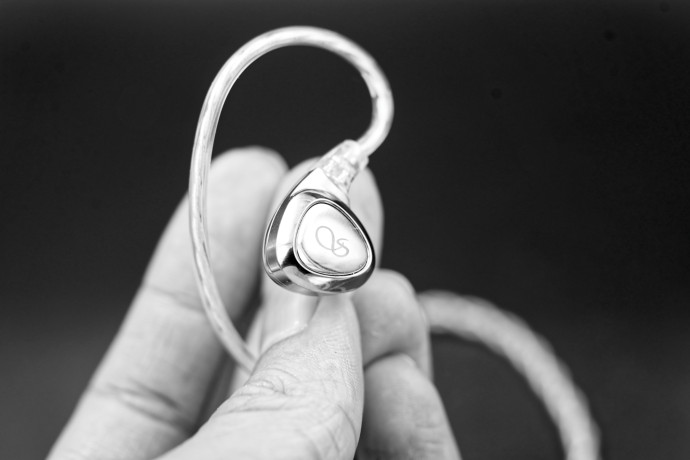
Comfort
In the ears
Comfort-wise, the brand advertised them as “Designed for Perfect Comfort”. And, if that sounds a little bit exaggerated, I have to admit that once fitted into my ears, the Sono are, indeed, really comfortable.
The rounded shape perfectly filled my ears, and even paired with the default tips, the Shaling were as comfortable as any high-end IEM from the brand, even more thanks to their lightness. In fact, they were so light that if the cable didn’t hang from them, I would easily forget about them. A solid 9 out of 10 in this aspect and definitely the comfiest IEM you could get in this price range..
Finally, to my surprise, the brand didn’t provide us with a plethora of tips as it used to, but only four pairs – luckily, they come in different sizes (S/M/L + dual flange).
Isolation
With a solid shell, good tips and an ear-filling design, the Shanling Sono were awesome noise-blockers – which was to be expected. On my daily commute, they perfectly dampened the noise coming from the train, and the subway. Same at the office: once plugged in, the ears completely cut me off from my colleagues, when music played and shut off most of the annoying background hum, just plugged into my ears.
So, time to check the specs!
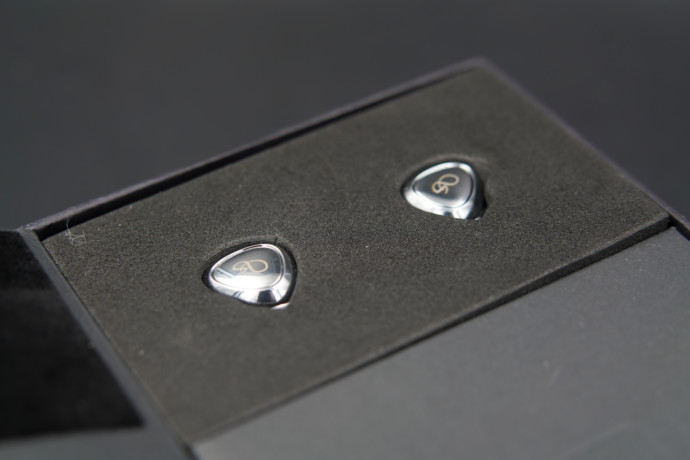
Specifications
For the nitpickers and nerdy ones here, I’m giving the specs and technical sheets. For all the others, you can just go to the next page to see how the Shanling Sono performs.
Triple-Driver + Coaxial design
With the Shanling Sono, the brand introduces a whole new hybrid setup, combining two dynamic drivers assembled together, and a classical balanced armature, solely dedicated for the highs. Unfortunately, I don’t have any information regarding this driver, but what we know is the fact that this one was custom ordered to meet the “stringent standards of Shanling, assuring its ideal performance as a treble driver”. A will of good faith !
But, going upstream, this is where things get really interesting. Why? Because instead of packing two drivers, like every other brand would do, the Sono embeds a whole new coaxial design, where the two of them are positioned one behind the other – much like the passive radiators you’d find in modern bluetooth speakers.
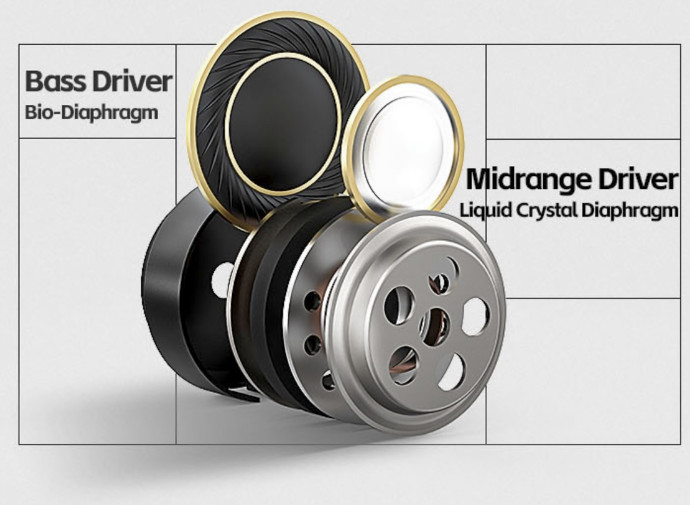
An unconventional design that becomes even more distinctive when examining the membranes:
- 1x 9.2mm bio-diaphragm for the lows, something that FiiO has been working on for the last decades as it seems
- 1x 6.8mm Liquid Crystal Diaphragm for the mids, lighter and stiffer, this new diaphragm allows deeper lows and quicker transient
Two technologies that we’ve already encountered in previous models of the brand, but at a much higher price-point, and usually not paired together. To push things further, the Sono is is also equipped with a Triple Magnet Design and lightweight HCCAW voice coil that provide “greater resolution and more expressive sound quality”.
Last but not least, the Shanling Sono also comes with a swappable nozzle:
- Black ring / Balanced nozzle: slightly warm with a small boost of the bass, combined with naturally sounding midrange and smooth treble,
- Red ring / Bas nozzle : bass boost, for an improved mid-bass kick and extended sub-bass reach. Giving the instruments more depth and pushing the sound to simply full-on-fun mode.
Bundle
Inside the box
The Shanling Sono comes with a scarce bundle, reminiscent of its entry-level positioning. In the box, you get:
- the Shanling Sono
- 1x silver-plated copper cable in 4×32 configuration
- 4 sets of eartips (S/M/L + Biflange)
- a travel pouch made of pleather
- two sets of nozzle (balanced or bass)
- some documentation
A basic bundle that puts the Sono more in line with the like of FiiO FD11.
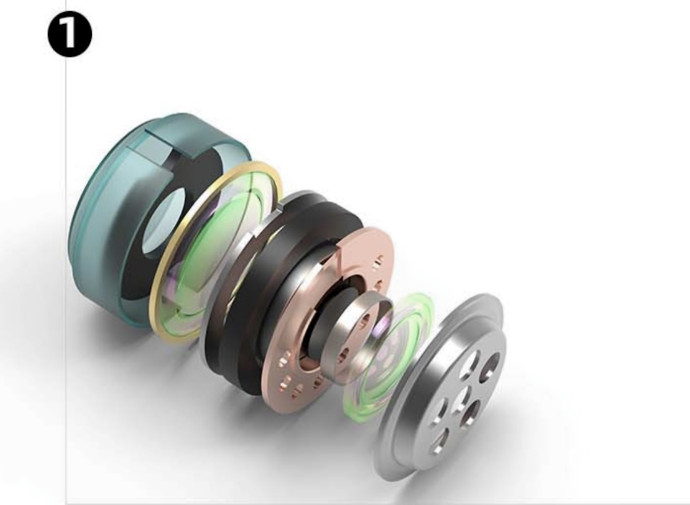
Additional accessories
There are three things you could get for your Shanling Sono:
- first, a good source like a DAC/AMP or a DAP, I’d suggest something small and simple like the Shanling UA1 Plus, or the ddHiFi TC35 Eye
- second, a balanced cable, in case you took a DAC or DAP like I offered you before
Full specs
- Model: Shanling Sono
- Type: IEM
- Drivers: proprietary dynamic driver with a coaxial design + balanced armature
- Socket: 2-pin 0.78mm
- Cable: silver plated copper cable
- Shell: die-cast zinc aluminum alloy
- Frequency Response: 16Hz- 40kHz
- Impedance: 16 ohms
- Sensitivity: 103dB
- Sound Isolation (up to): 30dB
- Cable length: 130cm
- Weight: 8,6g per ear
- Price: $79 USD
The article continues on Page Three, after the click here
Page 1: about Shanling, casing, construction
Page 2: UI & Usage, Bundle, specifications
Page 3: sound & conclusion





